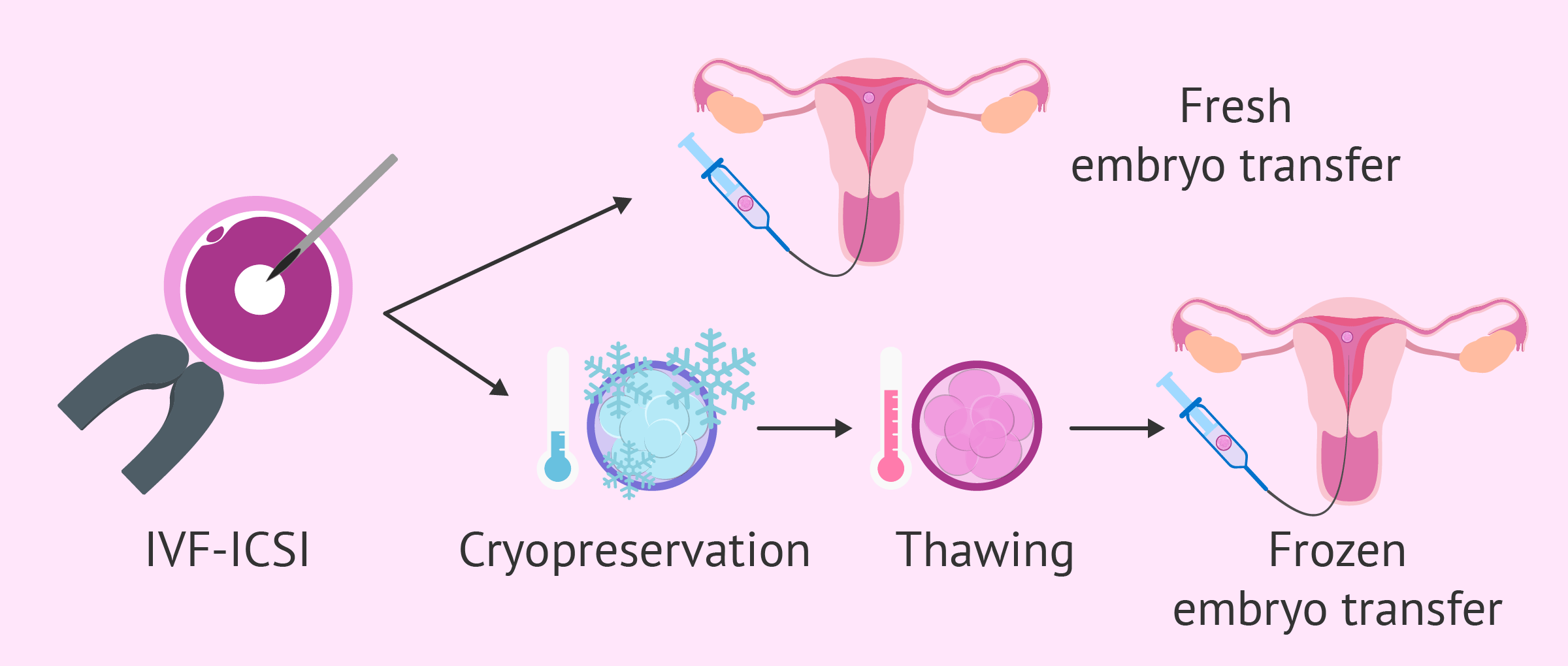
Frozen Embryo Replacement Cycle (FERC)
About the Treatment
In IVF treatment, many eggs are collected, and this results in the creation of embryos. The best embryos are selected for embryo transfer with the number to be transferred predetermined by your consultant. The remaining embryos are cryopreserved (frozen) if deemed suitable (and both partners agree to this). It is important to note that about 50% of embryos are ideal for freezing, and about 70% of those frozen survive once they are thawed. The transfer of frozen embryos can be carried in a “natural” cycle providing the women’s menstrual cycle is regular, and she is ovulating. In cases where the cycle is irregular, or the woman has difficulties coming up to the clinic, or she is not ovulating, we prepare the womb’s lining with hormones.
Process of FERC: Like the other conventional treatments, the Frozen Embryo replacement cycle does not require the ovaries to be stimulated. Instead, Oestrogen is administered, normally in tablet or patch form. This enables the uterine lining to develop for the embryo’s to be replaced. In a Frozen Embryo Replacement Cycle, the woman takes medications to prepare her womb to receive these embryos.
An ultrasound scan is performed to assess the uterus’ lining to determine whether it is ready to receive the embryo. Once the lining is ready, embryos are thawed and transferred.

